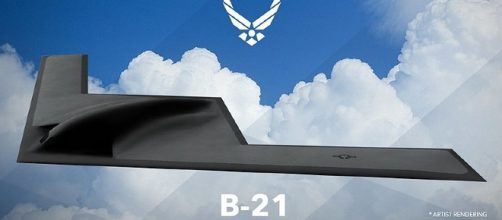The USAF is about to enter the first stage of the development of the nation’s next-generation Long-Range Strike bomber (LSR-B), which is expected to give the America a huge advantage on the modern-day battlefield. Thankfully, things are getting better now, the Air Force has already announced the proposal for America’s next-generation strategic bomber, and has also awarded the contract to the company that has won the bidding war to build America’s next-generation strategic bomber.
Meant to replace its aging fleet of B-2, B-52 and the supersonic B-1 bombers, the new B-21 Raider strategic bomber will be a long-range, all-weather, air-refuelable, highly survivable aircraft with significant improvement in terms of electronic technology.
Best of all, the new bomber is capable of delivering conventional or nuclear strikes, with terrible precision. The LRS-B will be stealthy and more advanced than its predecessor, according to The National Interest.
However, the new bomber will be more cost-effective because it will rely on existing mature technologies rather than develop new technology. The system will also feature an open architecture for future development and capabilities. The B-21 Raider is expected to enter combat service by 2025
Like the super expensive F-35 program and the US Navy’s SSBN program, the LRS-B program is also one of the most closely watched defense acquisitions underway. According to the Scout Warrior, the USAF wants to buy some 80 to 100 of the next-generation stealth bombers at a cost roughly $550 million each.
Of course, financing the LRS-B program would be a huge nightmare. The USAF has already set aside a whopping $58.2 billion to develop the next-generation strategic bomber.
The rush for the new strategic bomber
One big reason for the Pentagon to start working on LRS-B program is its growing concern about the ability and motivation of adversaries to pursue their own A2/D2 strategies, which aims to prevent US forces to operate in areas close to the enemy’s backyard.
This denies the America from intervening or projecting its military power in regional conflicts or future clash points.
Rival countries such as Russia and China are getting more sophisticated and growing more powerful. Both have managed to create more effective A2/D2 strategies. China’s alleged carrier-killer anti-ship missile Dongfeng has become the symbol of these A2/D2 threats.
Earlier reports said that the carrier-killer anti-ship missile systems can cover a large expanse of space from launch points inside the main ground of denied airspace, which is well-covered by advanced surface-to-air missile system.
Locating and destroying these anti-ship missiles can be very hard for the US military. Mobility protects the anti-ship missile launcher from long-range cruise missile strike. Because these anti-ship missiles pose a direct threat to US naval forces operating in the region close to the hotspot areas, it is very important to be able to carry an immediate strike on them. And that’s where the new stealth bomber comes in.
The Air Force wants to prioritize the LRS-B program to replace its aging fleet of B-1, B-52 and B-2 strategic bombers.
Adversaries like China and Russia are increasingly getting more effective in some areas like missile technology, electronic warfare, hypersonic missile, radar technology and undersea battlespace. This also means America will no longer have the advantage and technological superiority it once enjoyed in the battlefield. Worst of all, the Air Force believed that China will soon overcome and beat the B-2’s low-observable features by the year 2020. This leaves the United States without any effective way of penetrating the enemy’s airspace to deliver conventional or nuclear strikes.
The challenge for the B-21 development
The Air Force originally intended to award the development and production contract for the new strategic bomber in June or July 2016, but eventually delayed and pushed the announcement to September due to some cost consideration and technical issues.
The program may also face serious budget issues as the USAF also working with other priorities, which include the much expensive F-35 program and ABM development program.
And then, there’s also the increased pressure to modernize the nation’s aging nuclear arsenal to catch up with the fast-growing Chinese and Russian nuclear capabilities. The silo-based Minuteman III ICBM, a pillar of the nation’s nuclear triad, is also expected to undergo a huge facelift. The planned modernization is expected to draw more funding from the already squeezed US defense budget, which in turn could affect the LRS-B program.
In addition to some USAF priorities and the planned modernization of the nuclear arsenal, the program may also face increased pressure from other services of the US military.
Extreme budget cuts may put the LRS-B development at odds with other military’s priorities like the Navy’s SSBN (X) program, The Navy’s next-generation littoral fleet (Zumwalt class), The Army’s Ground Combat Vehicle (GCV) program and the Navy’s Ford-class carrier program.


